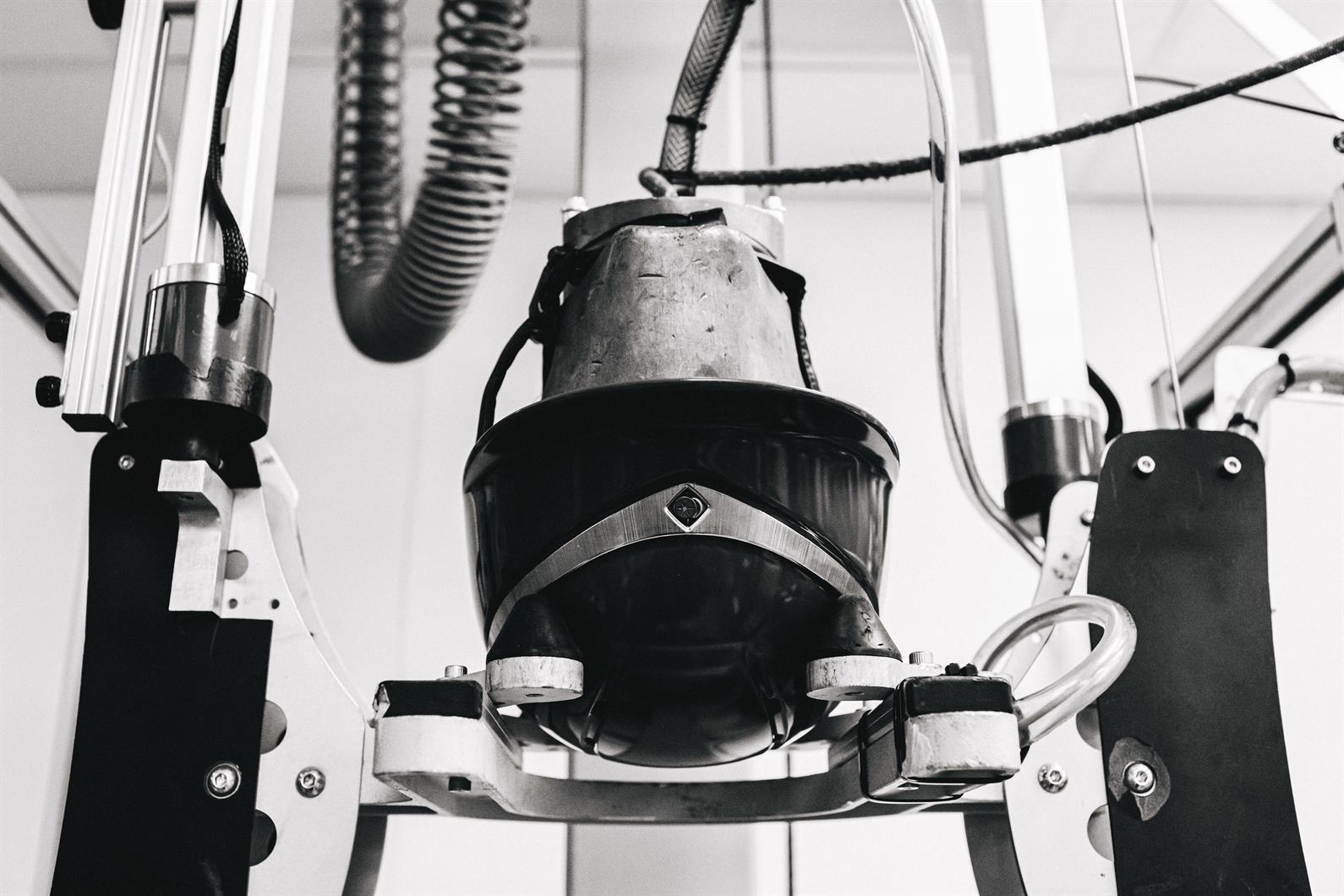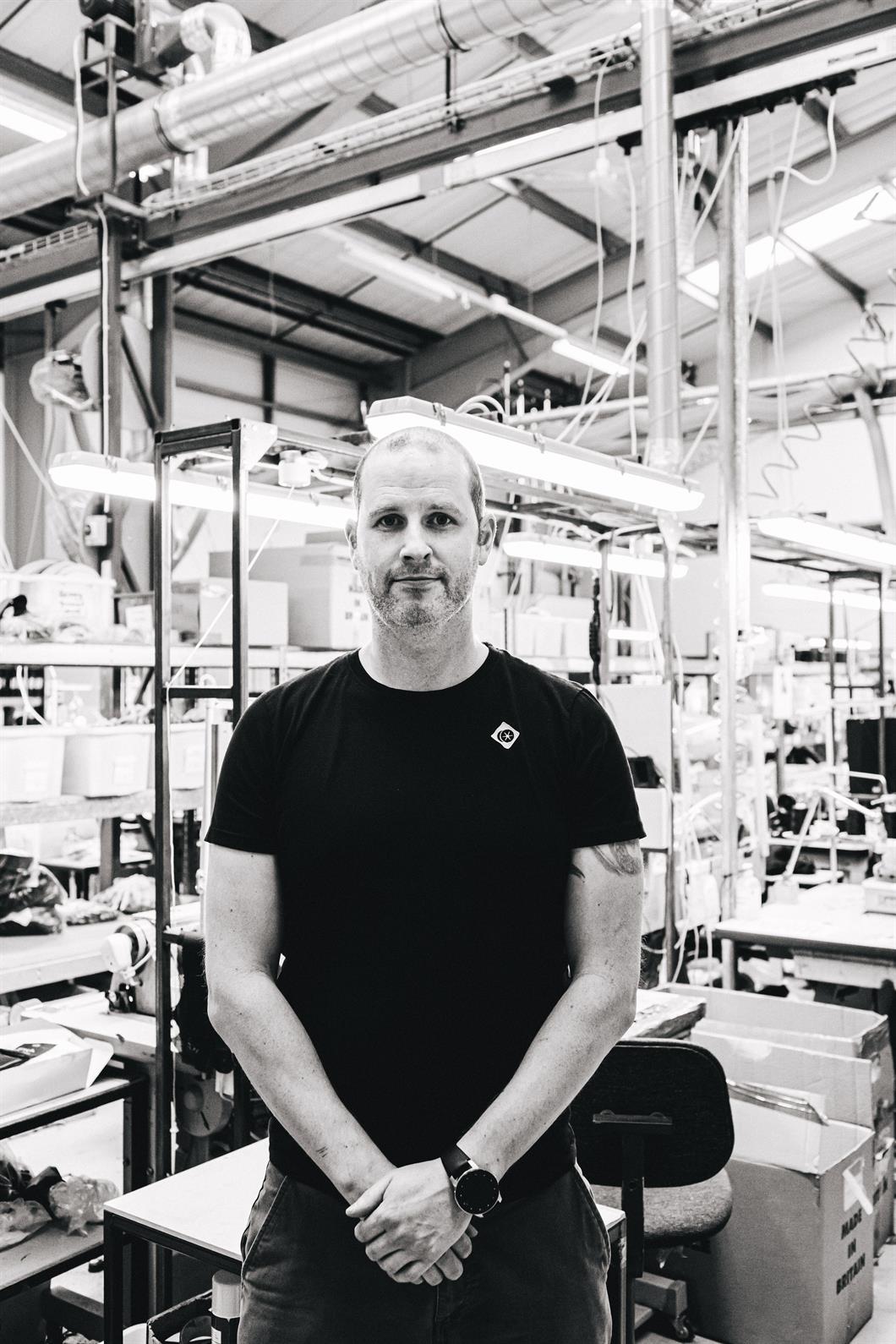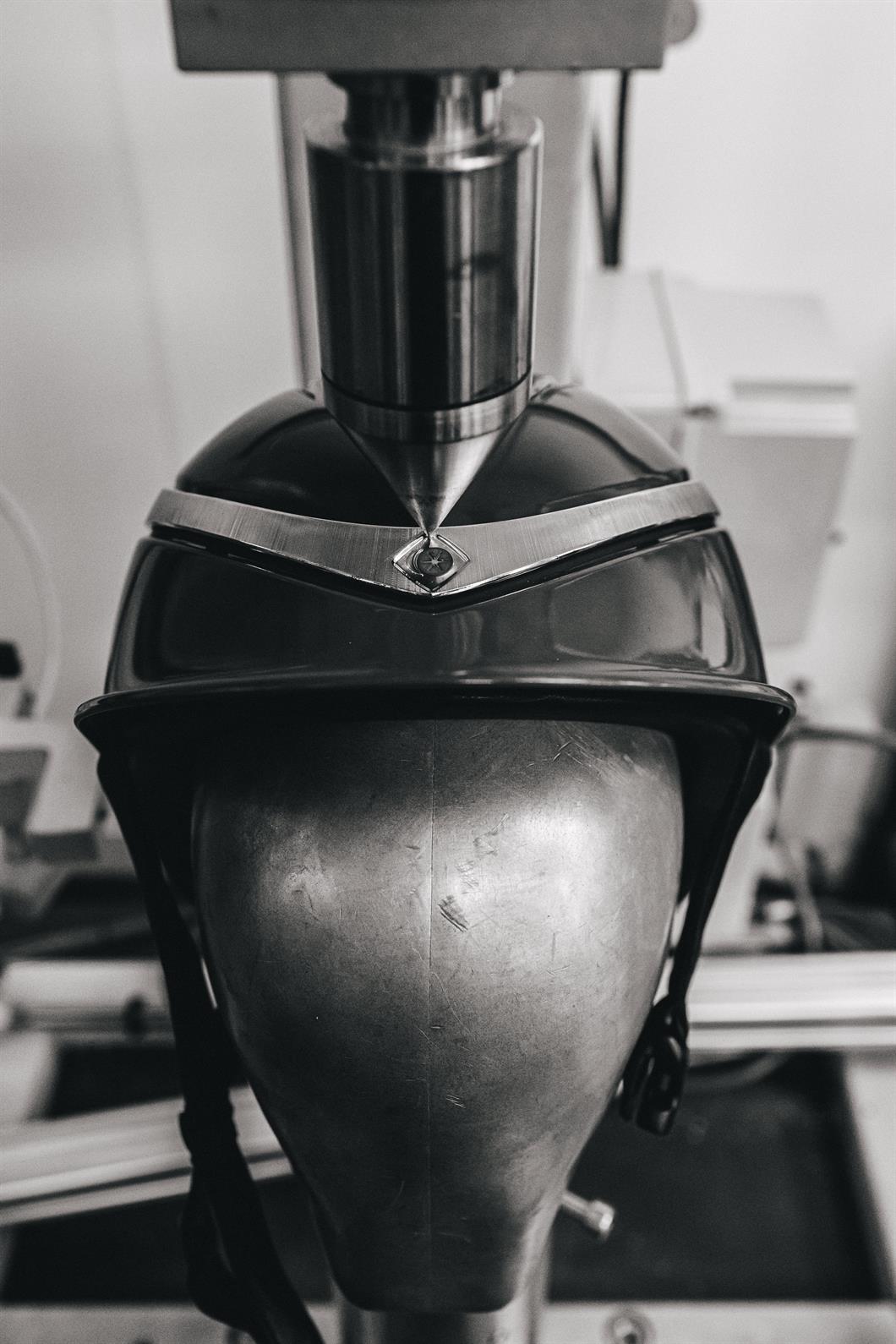
(Courtesy of Farrell Guy/Charles Owen)
Developing a new equestrian helmet involves a lot more than rethinking style—after all, it’s a crucial piece of safety equipment. For the team at Charles Owen, that means not only keeping up with safety advances and technology, but investigating and testing them, too. The result? A helmet that ticks all the boxes of safety, comfort, and appealing style. So what safety features are under the hood of your Charles Owen helmet? We asked the company’s Head of Innovation, Matt Stewart, to tell us about some of the safety features and testing that went into the company’s Halo and Luna helmets—and how his Innovation Lab’s work is helping improve helmet safety overall.
Earlier this year, the Swedish insurance company Folksam tested 13 equestrian helmets, comparing their performance in the most common accident scenarios. Charles Owen helmets performed the best of the group with the lowest risk of concussion, and, as Stewart noted, “Studies like this are important to be aware of, so riders can make informed decisions when getting in the saddle as not every helmet will perform in these varied scenarios; accidents can vary so much. You only have one head, and these independent studies will help you to decide what will save it!”
And if you’ve been hearing a lot about Mips technology as a safety feature in modern products like Charles Owen’s Halo and Luna helmets, you’re not alone. We caught up with Mips Head of Product Development, Marcus Seyffarth, to get an inside view of how Mips technology works and why many equestrians look for it when they’re shopping for helmets.

(Courtesy of Farrell Guy/Charles Owen)
MATT STEWART - HEAD OF INNOVATION, CHARLES OWEN
First, we’d love to get a peek into your work as Head of Innovation at Charles Owen. What is your Innovation Lab’s role in developing and testing safety features and new technology in equestrian headgear?
My role as the Head of Innovation is to conduct research in the Lab (for Charles Owen, with universities and committee groups), investigate and test new materials, and conduct ongoing tests and improvement of existing products. I work with the BSI and ASTM helmet/body padding committees to make the international standards even safer.
What kind of internal testing do you put helmets through and why?
I usually conduct destructive testing to many different helmet standards (PAS015, Snell, ASTM:F1163, and NOCSAE), which involves testing helmets in many ways to replicate riding accident scenarios. This can be dropping helmets onto flat and hazard anvils from specified heights, as well as spike testing.
We test prototypes, first trial samples, and new helmets fresh off the production line to ensure continual quality. I also test new materials in existing helmets, looking to squeeze out more performance and conduct experiments for published research papers, which are used as evidence given to helmet committees to improve standards.
In your opinion, what are the most impressive safety features that the Halo and Luna have?
We're very excited about these new styles. Our internal and external tests with BSI and ASTM have shown we have achieved more performance in impacts and crush resistance for these styles. We also have the optional Mips safety feature, which is designed to reduce rotational motion to the head.
The Halo and Luna are certified to three international standards: VG1, PAS015:2011, and ASTM F1163:2015. These three standards are all different in some ways and therefore cover a wide range of scenarios between them, which is why we believe a helmet should have a minimum of three standards on the label. You only have one head—look after it!
The Folksam study didn’t test the Halo and the Luna specifically, but what message can equestrians take from the testing and the great results or the Charles Owen MS1 Pro and My Ps Wide Peak if they’re considering the Halo or the Luna for their next helmet?
The Halo and Luna weren't tested because they weren't yet being sold at the time of the study, but our helmets do perform very well. We expect all our helmets to perform well when compared to many helmets on the market, because 95% of our helmets hold three international safety standards and have the kitemark, which means every helmet coming off the production line is as good as the first. We are independently audited to ensure this quality.
What has your internal testing of the Halo and the Luna revealed about their protective value?
That we have squeezed even more safety performance into these new styles.
What makes Mips technology so important to equestrian safety?
In scenarios where the rider is injured in a fall from a horse, the most frequent are oblique angle falls (falling at an angle). It is known that angular acceleration is the dominating cause of brain injuries. The Mips safety system and other technologies are engineered to act in a way to reduce the angular forces and therefore help reduce the risk of brain injury.
Are there other innovations the Halo and the Luna have that you think are noteworthy?
We have improved the ventilation; there is a hidden ventilation channel under the ring. The ring also works with the helmet to improve its crush resistance. The new lattice harness secures the helmet to the head in a way that is comfortable and secure. These helmets also have a peak that flexes in impact scenarios, so it does not add to whiplash, and they have a removable washable lining for freshness.

(Courtesy of Farrell Guy/Charles Owen)
MARCUS SEYFFARTH - HEAD OF PRODUCT DEVELOPMENT, MIPS
What is Mips technology? How does it work?
The Mips system is designed to provide added safety for helmets. For certain impacts, the Mips system can reduce harmful rotational forces that might otherwise be transferred to the head.
Rotational motion is the most common cause for concussions and more severe brain injury in oblique hits to the head. The Mips system consists of a low-friction layer that is mounted in the helmet. In a crash, the low-friction layer is designed to move slightly inside the helmet in order to help redirect rotational forces away from the head.
Why should an equestrian want Mips technology in their helmet?
When falling and hitting your head, you will most likely have an oblique impact, which can create rotational motion to the head. The Mips system is designed to help reduce rotational motion in certain impacts.
In your view, how does the Folksam study illustrate the value that Mips technology brings to an equestrian helmet?
Thanks to tests like the one Folksam is doing, even more people can learn about the crucial importance of adding protection against rotational motion in your helmet. As we can see, rotational motion is a common cause for concussions and more severe brain injury in oblique hits to the head.
How is a helmet with the Mips safety system different from one without it? And do they require different care?
First of all, the most important thing when you are out riding is that you wear a helmet. The Mips system is designed to help reduce rotational motion to your head in certain impacts if you should have an accident. Regarding care, it should be about the same as a helmet without the Mips system. If you want to clean the Mips system, you can just use gentle soap and lukewarm water, but you should never try to remove the Mips system or tamper with it in any other way.


